There’s no doubt about it – car mold & the smell of mildew is a growing problem for many motorists here in the Pacific NorthWest. We’re surrounded by flora, the climate is chock full of precipitation 9 months out of the year, and as of late, summer seems to start earlier than ever. To combat the issue, we’ve been cooped up in the lab, rigorously testing our mold remediation & removal methods to maximize efficiency, while minimizing the risks of exposure.

Fortunately enough, most of the mold remediation we have done recently has been interior only, and pretty minor. While it looked far from good, even this VW Golf TDI that came to us recently didn’t come close to the Suburban of 2011 — one of the moldiest cars we’ve ever cleaned.
Fortunately enough, most of the mold remediation we have done recently has been interior only, and pretty minor. While it looked far from good, even this VW Golf TDI that came to us recently didn’t come close to the Suburban of 2011 — one of the moldiest cars we’ve ever cleaned.
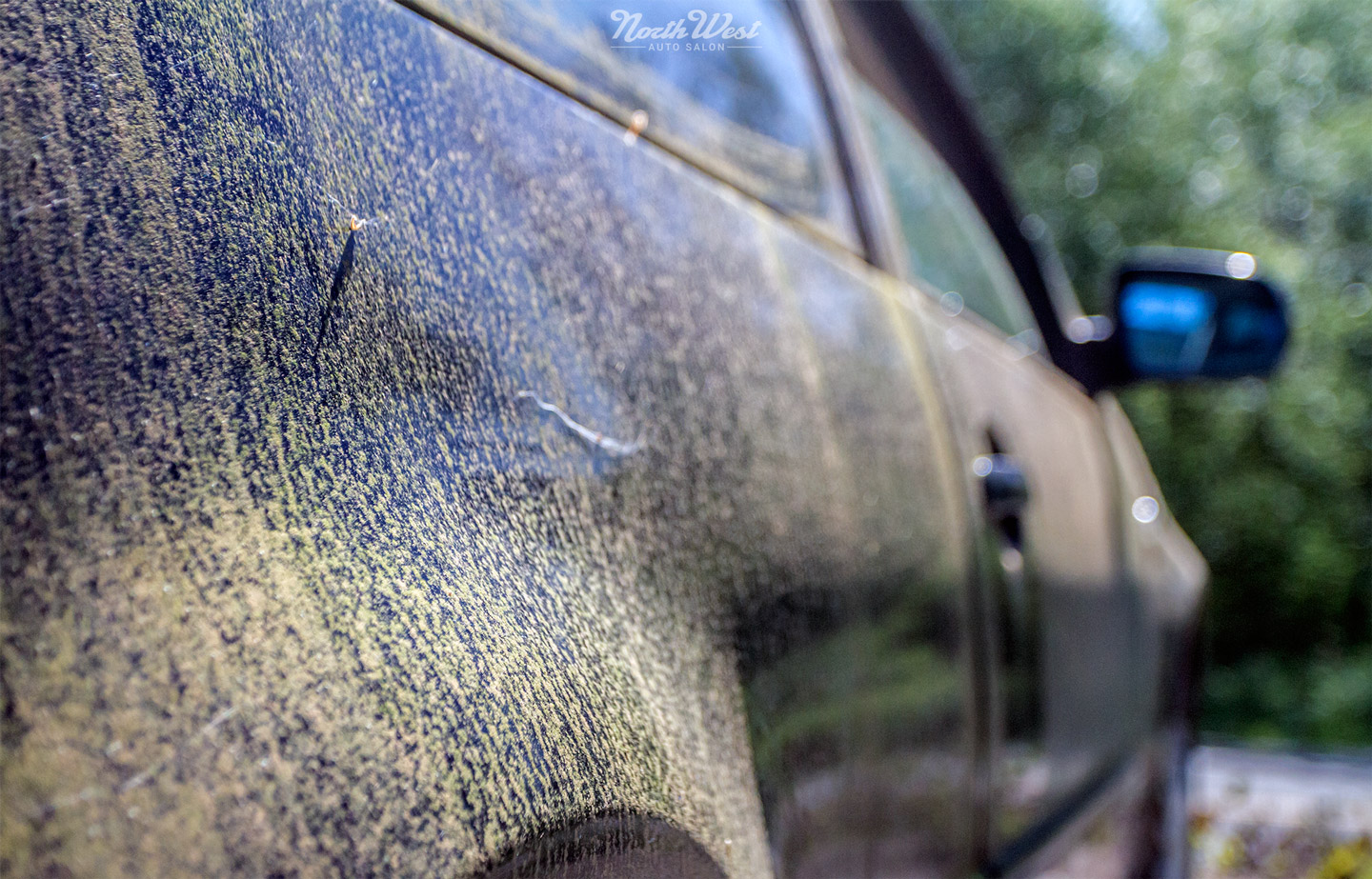
Upon initial inspection a majority of the car’s growth seemed to be happening on the exterior. Not surprising, as we came to find out the car had been left sitting outside for quite some time, so this much algae was to be expected. With so much built up, it looked as if the surface of the Golf was starting to produce its very own ecosystem.
Upon initial inspection a majority of the car’s growth seemed to be happening on the exterior. Not surprising, as we came to find out the car had been left sitting outside for quite some time, so this much algae was to be expected. With so much built up, it looked as if the surface of the Golf was starting to produce its very own ecosystem.
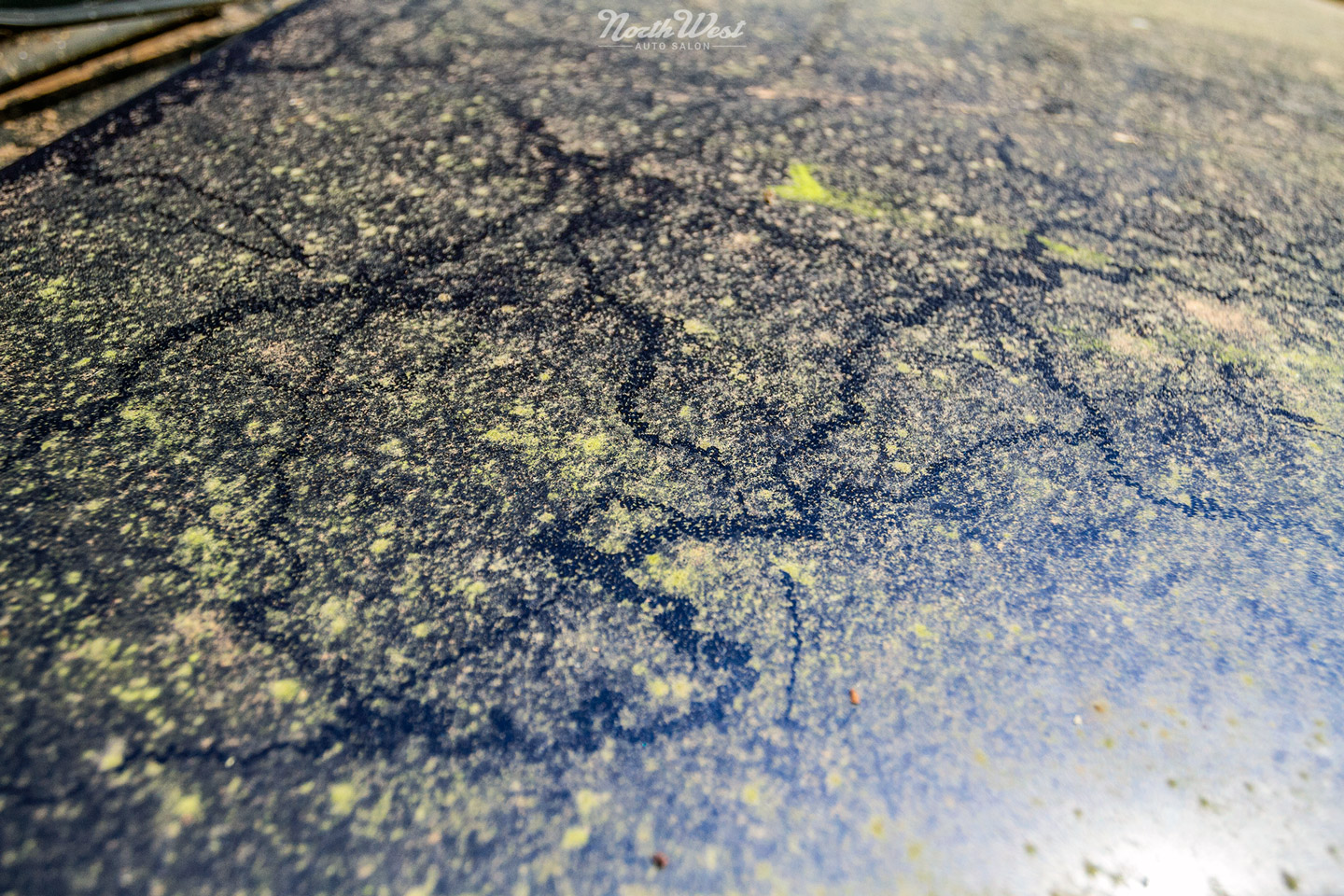
The paint was oxidizing in places; the drip rails along the roof were packed with pine needles, and the roof was showing a spiderweb of fungus growth.
The paint was oxidizing in places; the drip rails along the roof were packed with pine needles, and the roof was showing a spiderweb of fugus growth.
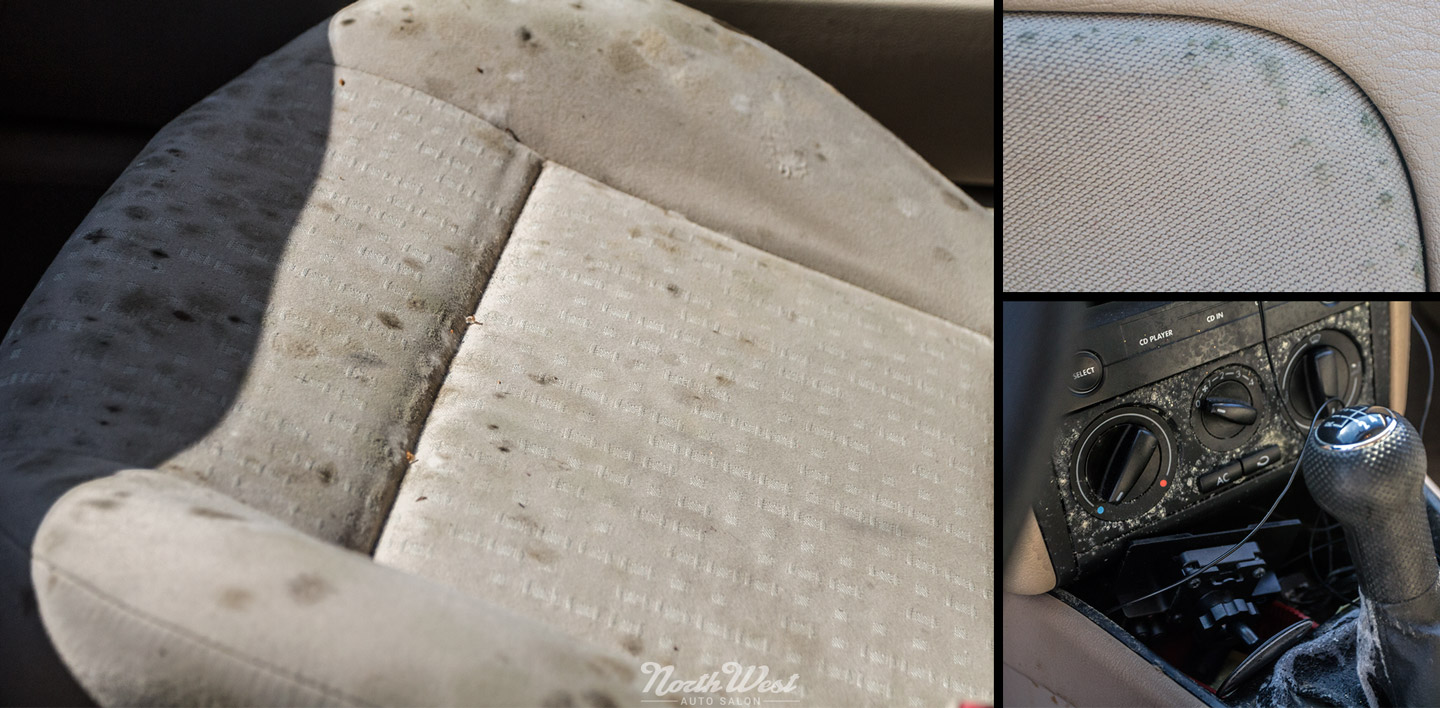
Inside the TDI, the mold was just starting to take hold. The seats, door panels, and center console seemed to be the worst off, with lots of speckled staining from larger spores, and even a bit of growth happening on the surface of the center console & trim.
Inside the TDI, the mold was just starting to take hold. The seats, door panels, and center console seemed to be the worst off, with lots of speckled staining from larger spores, and even a bit of growth happening on the surface of the center console & trim.

As crazy as it sounds, we decided to pull the VW into one of the cleanest sections of the shop & get a closer look at things in the photo studio without so much as a rinse. Mold and exposure had fogged out the headlights, flourished across the fascia, and grew into every crack & crevasse on the car it could find. Mother nature brought a few friends along too, as we discovered a wide variety of insects making a home in the VW.
As crazy as it sounds, we decided to pull the VW into one of the cleanest sections of the shop & get a closer look at things in the photo studio without so much as a rinse. Mold and exposure had fogged out the headlights, flourished across the fascia, and grew into every crack & crevasse on the car it could find. Mother nature brought a few friends along too, as we discovered a wide variety of insects making a home in the VW.
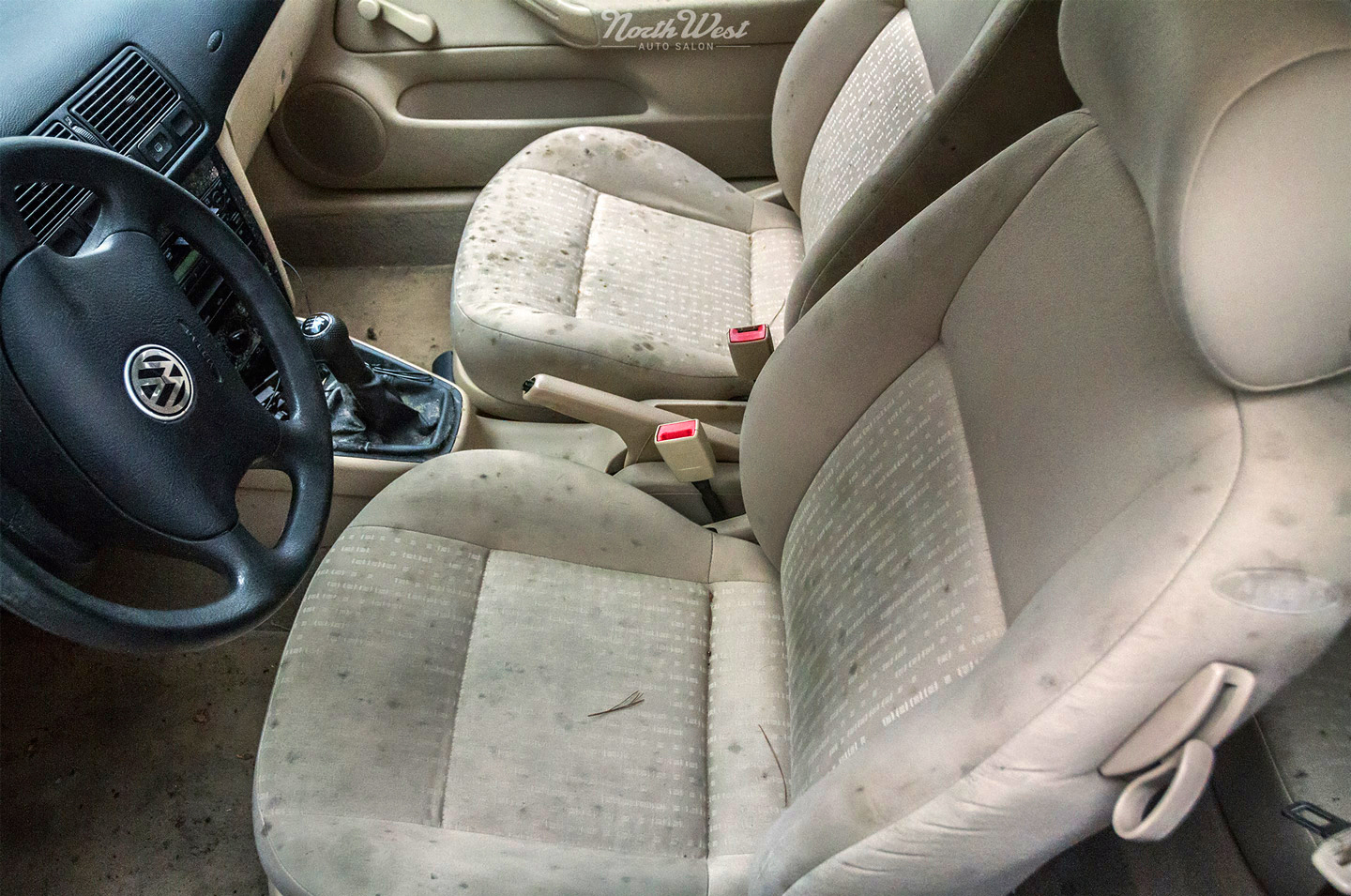
Most of the interior mold damage was accumulative staining, which is fairly easy to remove from cloth interior & recondition back to normal. There was a decent amount of dirt & grime building up inside, but no signs of serious water damage to the carpets or foam padding, which is always a good sign for cars in need of mold remediation.
Most of the interior mold damage was accumulative staining, which is fairly easy to remove from cloth interior & recondition back to normal. There was a decent amount of dirt & grime building up inside, but no signs of serious water damage to the carpets or foam padding, which is always a good sign for cars in need of mold remediation.
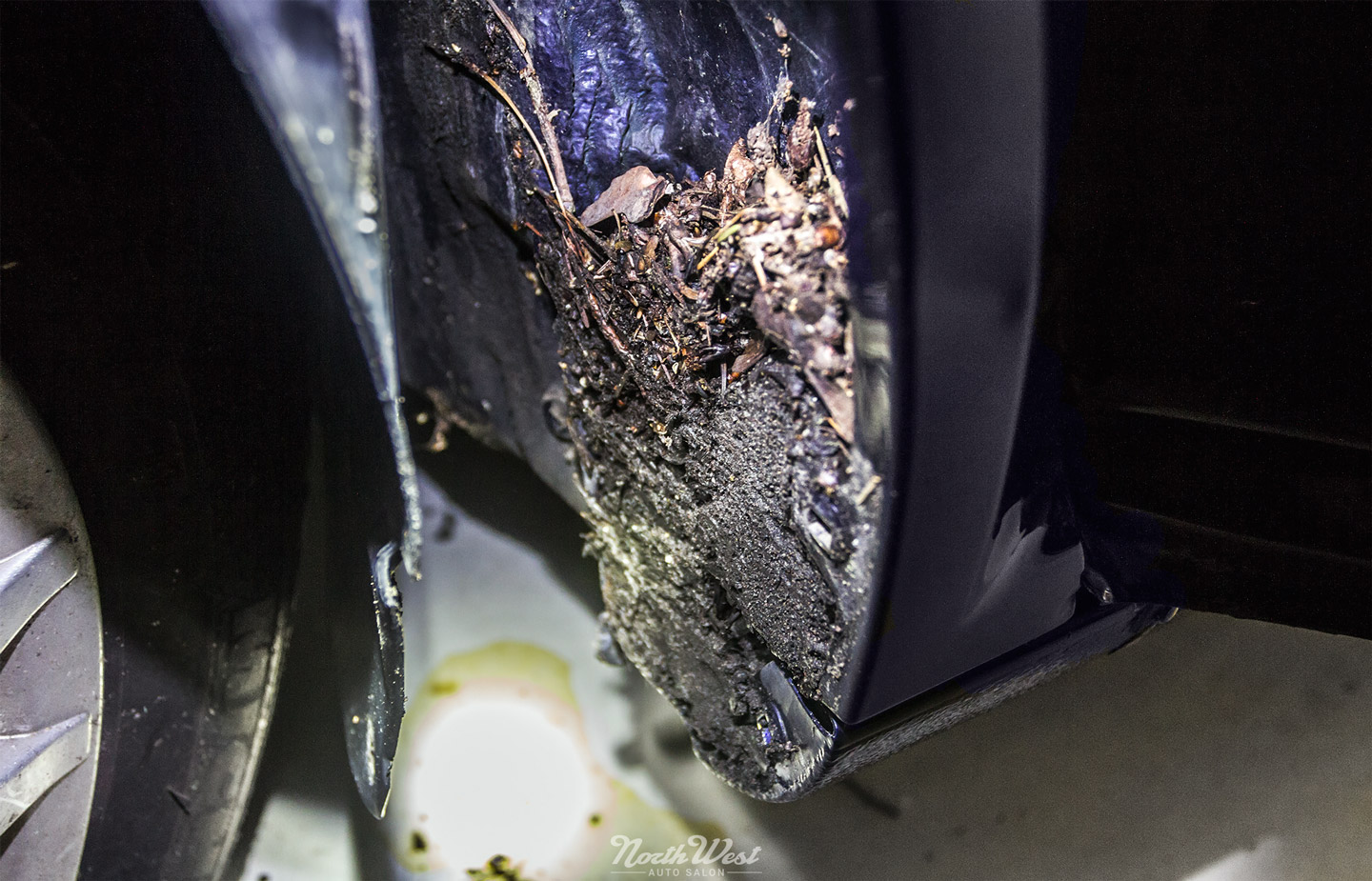
Back in the wash bay, Alex set to work pressure washing all the git & grime off the Golf. Upon removing a damaged wheel well liner, it became abundantly clear where moisture seeping in from.
Back in the wash bay, Alex set to work pressure washing all the git & grime off the Golf. Upon removing a damaged wheel well liner, it became abundantly clear where moisture seeping in from.
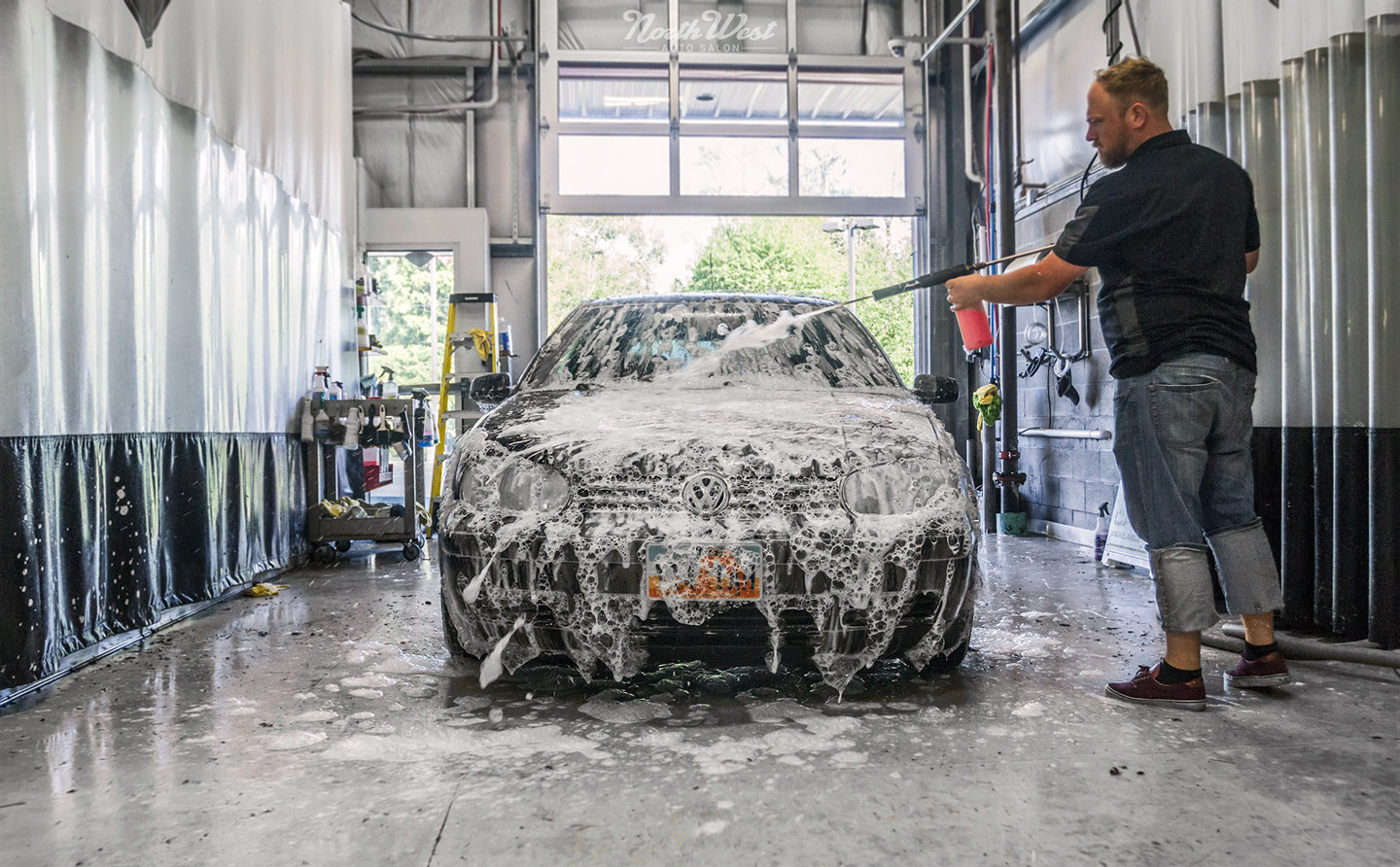
Gunk of this magnitude requires a bit more aggression than our standard 24-step hand wash, so once the top layer of algae & contaminants blasted away, it was time to concoct a special mixture of foam to break down what was left behind.
Gunk of this magnitude requires a bit more aggression than our standard 24-step hand wash, so once the top layer of algae & contaminants blasted away, it was time to concoct a special mixture of foam to break down what was left behind.
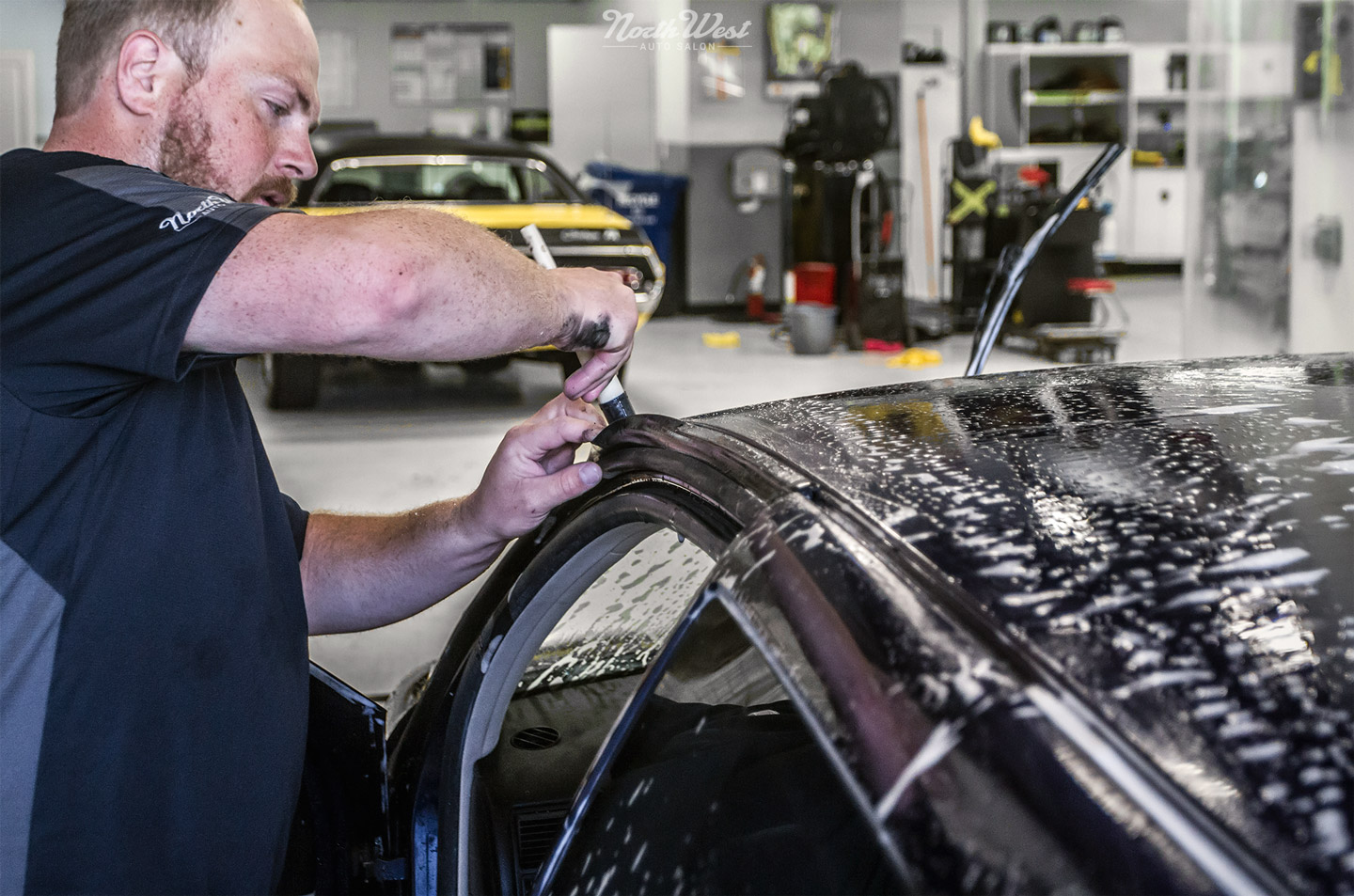
As the surface of the TDI began to get saturated, Alex brushed out the jambs, cleaned the drip rails, and gave the Golf a quick leak down test to see if we could pinpoint where some of the moisture was making its way into the car’s cabin.
As the surface of the TDI began to get saturated, Alex brushed out the jambs, cleaned the drip rails, and gave the Golf a quick leak down test to see if we could pinpoint where some of the moisture was making its way into the car’s cabin.
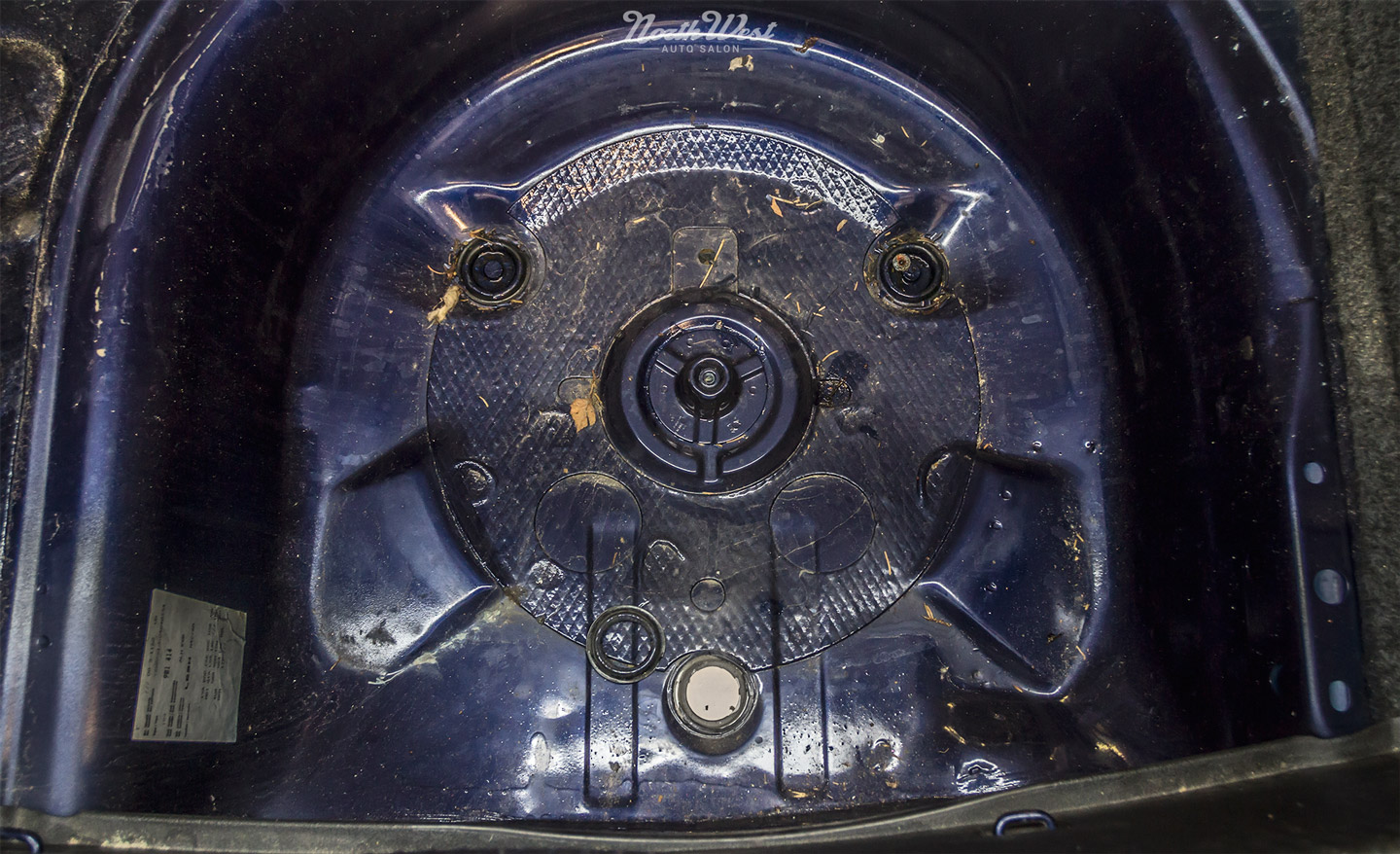
In the early stages of the Golf’s interior strip down, Tomas quickly discovered a spot for moisture to easily make its way into inside the car. A plug in the spare wheel well was missing entirely, leaving a half-dollar sized hole in the floor open to the outside world. Even though we had a good idea of how the outside got in, we still did a quick scan of the interior with a FLIR to scope out moisture levels. The next step is a bit of a proprietary process designed to kill off everything inside the car before we fully expose ourselves. Once all foreign organisms within the vehicle are neutralized, we perform a thorough HVAC cleansing followed by an ozone treatment to take care of the odor while cleaning out anything else that could be hiding within the climate system.
In the early stages of the Golf’s interior strip down, Tomas quickly discovered a spot for moisture to easily make its way into inside the car. A plug in the spare wheel well was missing entirely, leaving a half-dollar sized hole in the floor open to the outside world. Even though we had a good idea of how the outside got in, we still did a quick scan of the interior with a FLIR to scope out moisture levels. The next step is a bit of a proprietary process designed to kill off everything inside the car before we fully expose ourselves. Once all foreign organisms within the vehicle are neutralized, we perform a thorough HVAC cleansing followed by an ozone treatment to take care of the odor while cleaning out anything else that could be hiding within the climate system.
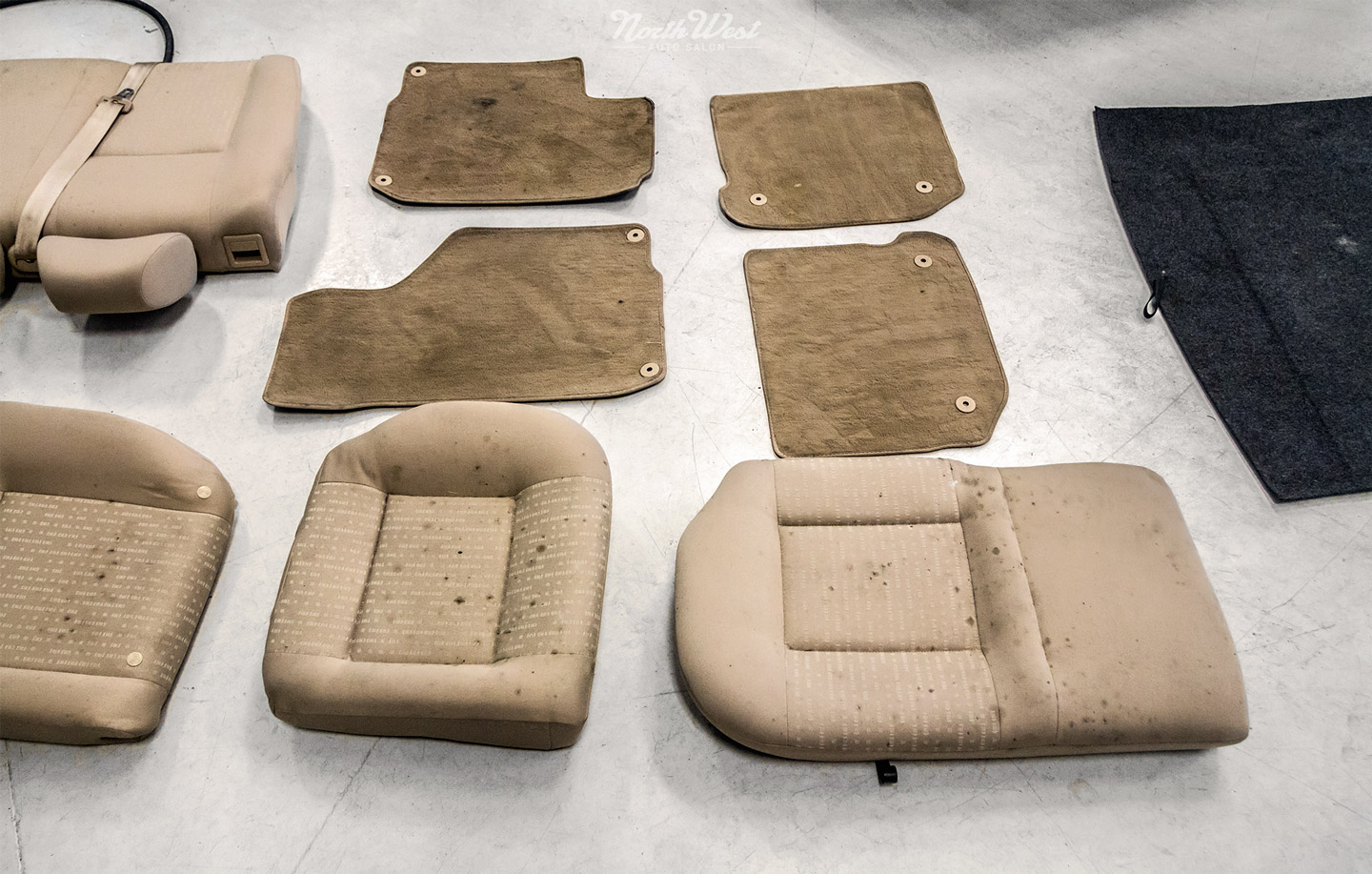
Upon pulling the front seats, carpet floor mats, and breaking down the rear seating, Thomas could then begin vacuuming out the interior to further prep it for deep cleaning. All the staining left behind from mold growth gets thoroughly scrubbed & spot treated with a combination of cleaning products, as well as hot water extraction. The carpets & upholstery also receive a shampoo & dry steam treatment.
Upon pulling the front seats, carpet floor mats, and breaking down the rear seating, Thomas could then begin vacuuming out the interior to further prep it for deep cleaning. All the staining left behind from mold growth gets thoroughly scrubbed & spot treated with a combination of cleaning products, as well as hot water extraction. The carpets & upholstery also receive a shampoo & dry steam treatment.
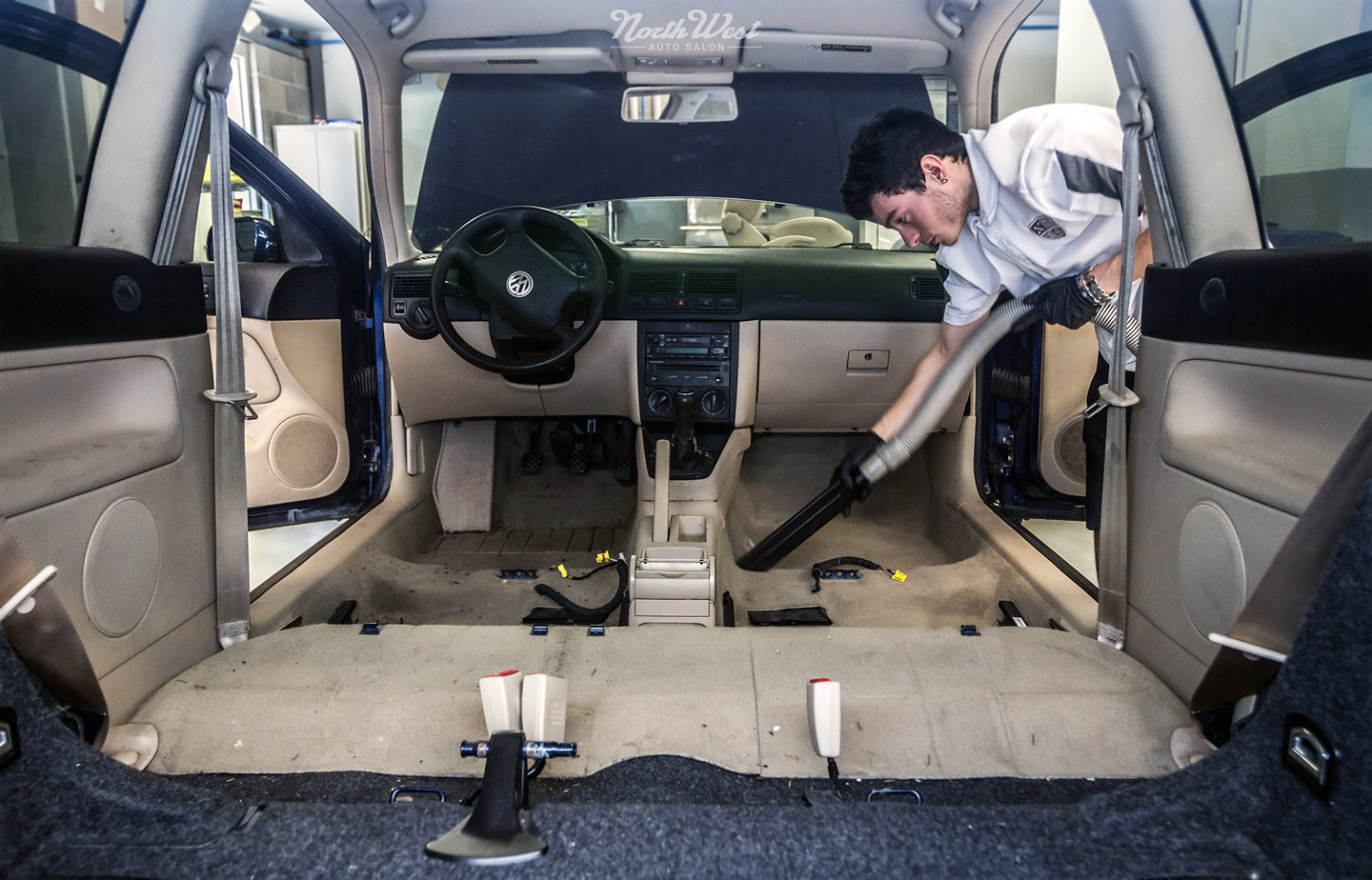
We do our best to return the car’s cabin to a factory-like finish, with smooth, matte surface texture & no shiny, oily residues left behind. Once the cabin has been completely normalized & reconditioned, once we’re absolutely positive no mold has been left behind, then and only then does everything get put back together.
We do our best to return the car’s cabin to a factory-like finish, with smooth, matte surface texture & no shiny, oily residues left behind. Once the cabin has been completely normalized & reconditioned, once we’re absolutely positive no mold has been left behind, then and only then does everything get put back together.
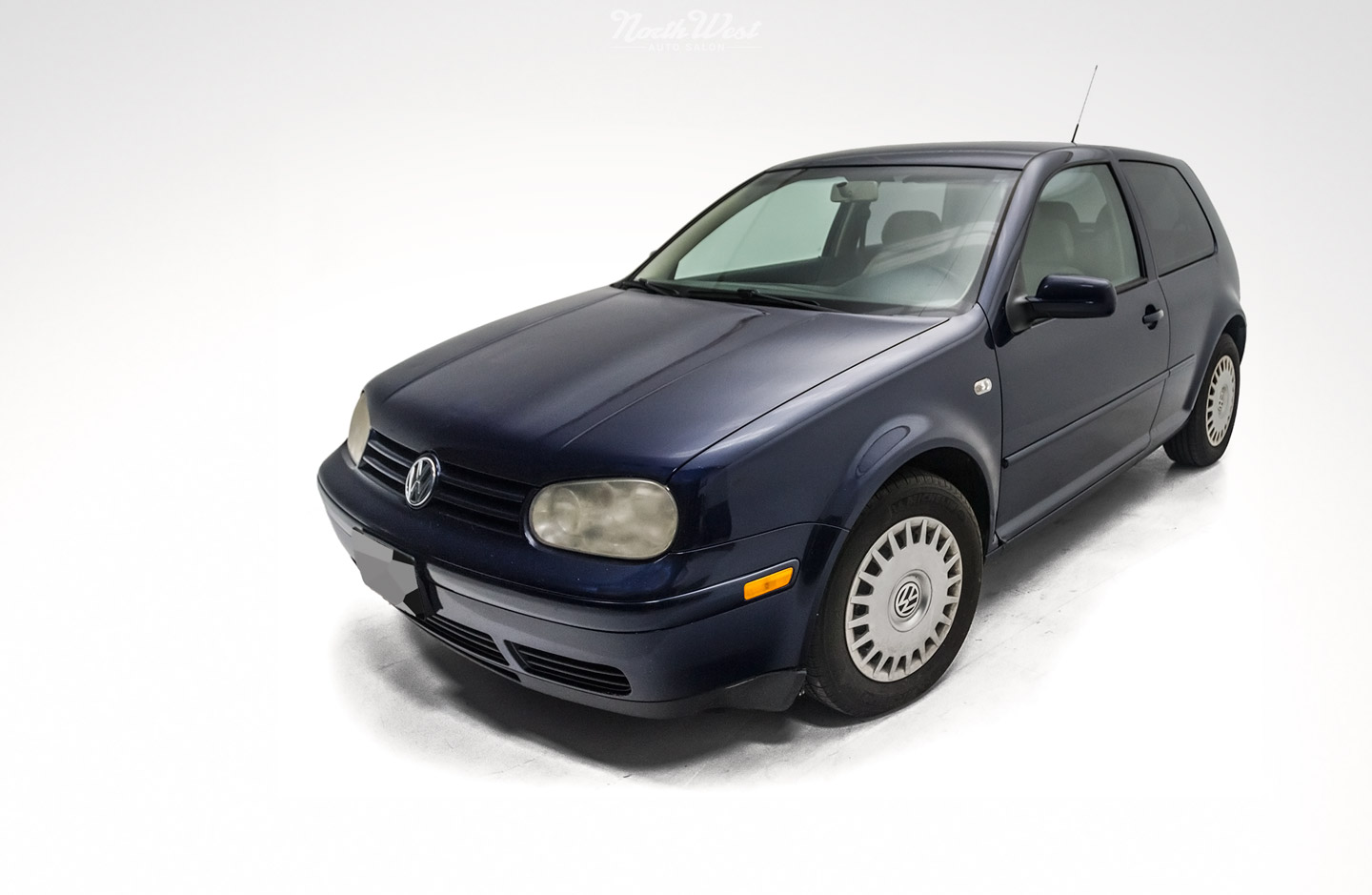
With the TDI back in working order after a final rinse down, we slipped it into the studio for a few more photos of the progress. While still far from perfect, this little VW is now in a much more commutable condition, posing no allergic threat to its pilot or passengers. From the outside, it just looks like a TDI that spent a little loo much time in the sun.
With the TDI back in working order after a final rinse down, we slipped it into the studio for a few more photos of the progress. While still far from perfect, this little VW is now in a much more commutable condition, posing no allergic threat to its pilot or passengers. From the outside, it just looks like a TDI that spent a little loo much time in the sun.

The grill that used to look like it was frothing at the mouth with fungus is now spotless, and all the little critters living in the cracks of the trim work have been forced to find a new home. The paint could benefit from a polish, the headlights resurfaced & the bumper mended, but otherwise the Golf’s exterior is as fresh as it will ever be.
The grill that used to look like it was frothing at the mouth with fungus is now spotless, and all the little critters living in the cracks of the trim work have been forced to find a new home. The paint could benefit from a polish, the headlights resurfaced & the bumper mended, but otherwise the Golf’s exterior is as fresh as it will ever be.

Back inside the Volkswagen, the interior that used to be an ecosystem has now stabilized & returned to normal. Nearly all the staining has been removed from the seats, headliner, carpets, and door cards. There’s no signs of moisture being reintroduced to the VW’s cabin, and all that’s left of to remind anyone of the once moldy interior is a worn shift boot.
Back inside the Volkswagen, the interior that used to be an ecosystem has now stabilized & returned to normal. Nearly all the staining has been removed from the seats, headliner, carpets, and door cards. There’s no signs of moisture being reintroduced to the VW’s cabin, and all that’s left of to remind anyone of the once moldy interior is a worn shift boot.

With the mold remediation & removal all finished up, we pulled the TDI out into the sun for a final care assessment with the customer before sending them on their way. After all, maintaining the condition of the vehicle after an extensive reconditioning service has been performed is vital to ensuring the mold will never return.
With the mold remediation & removal all finished up, we pulled the TDI out into the sun for a final care assessment with the customer before sending them on their way. After all, maintaining the condition of the vehicle after an extensive reconditioning service has been performed is vital to ensuring the mold will never return.
Have concerns about your own car mold & a mildew smell inside your vehicle or allergy worries? Check out our FAQs for more information on the hazards of operating a moldy car and what can be done to prevent spore growth from ever taking place. Want to schedule your car for mold remediation? Have a look at the service listing here, and be sure to contact us with any questions you may have.























